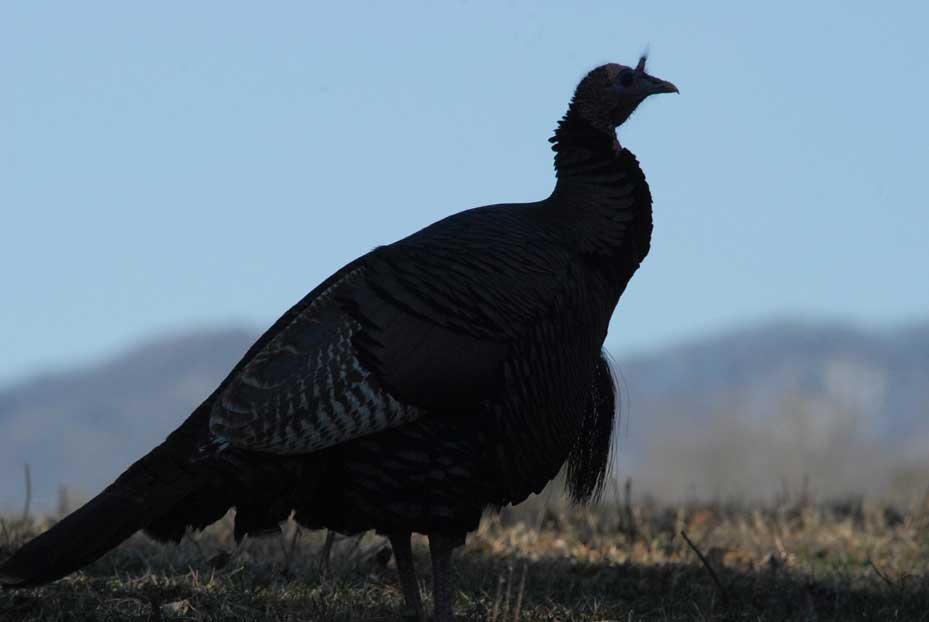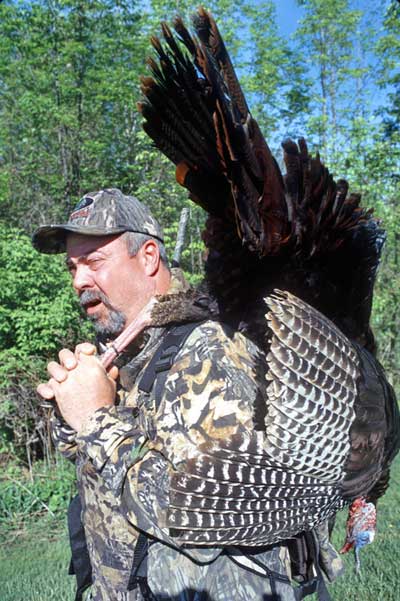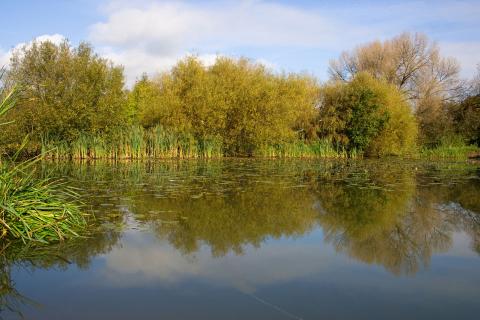provided by John Phillips
Ernie Calandrelli, from Buffalo, New York, enjoys all outdoor sports and has been turkey hunting for 44 years. Calandrelli retired a year or so ago from his positions of PR Director and Head of Advertising for Quaker Boy Calls after 34 years and is a longtime Mossy Oak enthusiast. Calandrelli has won or placed in the top 10 in over 100 turkey calling contests, including state, regional, U.S. and world championships. He’s hosted outdoor writers and Quaker Boy customers on turkey hunts all over the country in years past. Calandrelli has made so many friends in so many states that today he hunts as often as possible during spring gobbler season and deer season. Mossy Oak asked Calandrelli to name the wild turkeys that have taught him the most over the years.

I was hunting in northern Kentucky, in the mountains behind my friend John Wallace’s house one time. I’d brought a friend with me from New York named Chuck Brolinski. This Kentucky hunt was the first hunt Chuck ever had made out of state. The day was still, and we heard a turkey gobbling a long way off - right on the edge of our hearing. About 5 or 6 p.m., we were sitting on the edge of a pasture in a little point of woods with cedar trees on it. I set up both hunters in front of me and moved behind them. Although I didn’t call much, this turkey was gobbling his brains out but not moving.
Finally, John looked over at me and whispered, “If we get up and move to where that turkey is, I’m pretty sure we can kill him.” I knew John was right, but we were sitting on top of a fairly steep mountain. To reach that tom, we’d have to go down the other side of the mountain, cross the valley, climb the next mountain and set up on top of the mountain where the turkey was.
Since I don’t do well climbing up and down mountains, I whispered to Chuck, “Do you want to go with John and head down this mountain and up the next mountain? Then y’all will be on the same mountain as the turkey. If you do, I’ll sit here and keep calling to the turkey, and when he gobbles, y’all will know where he is.”
 John and Chuck got up, went over the top of the mountain we were on, down the backside of that mountain, crossed the valley and climbed to the top of the other mountain, while I continued to call to keep the turkey gobbling and giving away his location. Finally, I heard John call some, the tom gobbled back, I waited a few minutes, and then I called again. The turkey sounded like he was close to where John and Chuck were set up. Then the next time I heard the tom gobble, I could tell he’d walked past John and Chuck, was coming down their mountain and moving up the mountain where I was just under its crest. The gobbler came strutting and drumming toward me, and I shot him at 20 yards. That turkey didn’t even flop. I picked up all my calls and my vest and started walking toward the turkey. I was laughing to myself, since my hunting buddies had climbed the other tall mountain to get to the gobbler, and then he passed them, while presenting me with the shot.
John and Chuck got up, went over the top of the mountain we were on, down the backside of that mountain, crossed the valley and climbed to the top of the other mountain, while I continued to call to keep the turkey gobbling and giving away his location. Finally, I heard John call some, the tom gobbled back, I waited a few minutes, and then I called again. The turkey sounded like he was close to where John and Chuck were set up. Then the next time I heard the tom gobble, I could tell he’d walked past John and Chuck, was coming down their mountain and moving up the mountain where I was just under its crest. The gobbler came strutting and drumming toward me, and I shot him at 20 yards. That turkey didn’t even flop. I picked up all my calls and my vest and started walking toward the turkey. I was laughing to myself, since my hunting buddies had climbed the other tall mountain to get to the gobbler, and then he passed them, while presenting me with the shot.
Getting to the turkey required more time than usual – partly because I was enjoying the moment of having bagged that gobbler, while my two hunting buddies still had a mountain to climb. Just as I got to the turkey, he started flopping. He was so close to the top of the mountain that he flopped and rolled all the way down to the bottom of the mountain. When I reached the mountain’s top, I saw the turkey laying still at the bottom of the mountain, and I also could see John and Chuck coming down the mountain they’d climbed. As they walked toward the place where my turkey was, I yelled to them, “Hey, would you guys mind picking up my turkey and bringing him up the mountain to me.”
They told me later that they had heard the turkey rolling down the hill and saw right where he landed. They weren’t very happy with me, because they had to carry that turkey up the mountain to give him to me.
What I Learned from the Kentucky Rolling Tom:
- Patience will kill more turkeys than great woodsmanship or awesome calling will.
- You need to let the turkey make the first move to bag that turkey. When a turkey’s hung up, he’ll do one of two things: he’ll come to you, and you need to stay where you are, or he’ll walk away from you, and you may need to get up, make a big circle around him, try to get in front of him and change calls. Some people like John and Chuck can’t stand to have a turkey gobbling and not go to that turkey. I’d only been calling for about 30 minutes before they decided to move. Chuck told me later that there was a gravel road that the gobbler had to move across to get to me, and he said, “I knew when I heard that turkey dragging his wings over that gravel road, he wasn’t coming to us, but he was going to you.”
- You often can call a turkey much further away than you think you can. As the crow flies, that rolling tom was about a half mile away from where I was calling. However, if you had to walk to get to him, he was at least ¾ mile away.
- You can keep calling to a turkey that’s hung up and won’t come to you to keep him interested in you. If no other hen is close by, eventually he’ll decide, “If I’m going to find a hen to date and that hen two hills over is the only hen that’s talking to me, I’d better go meet her.”
- Two buddies were much better at carrying my turkey up the hill to me than I would have been going down the hill, picking up my turkey and climbing back up to the top of the mountain.



























